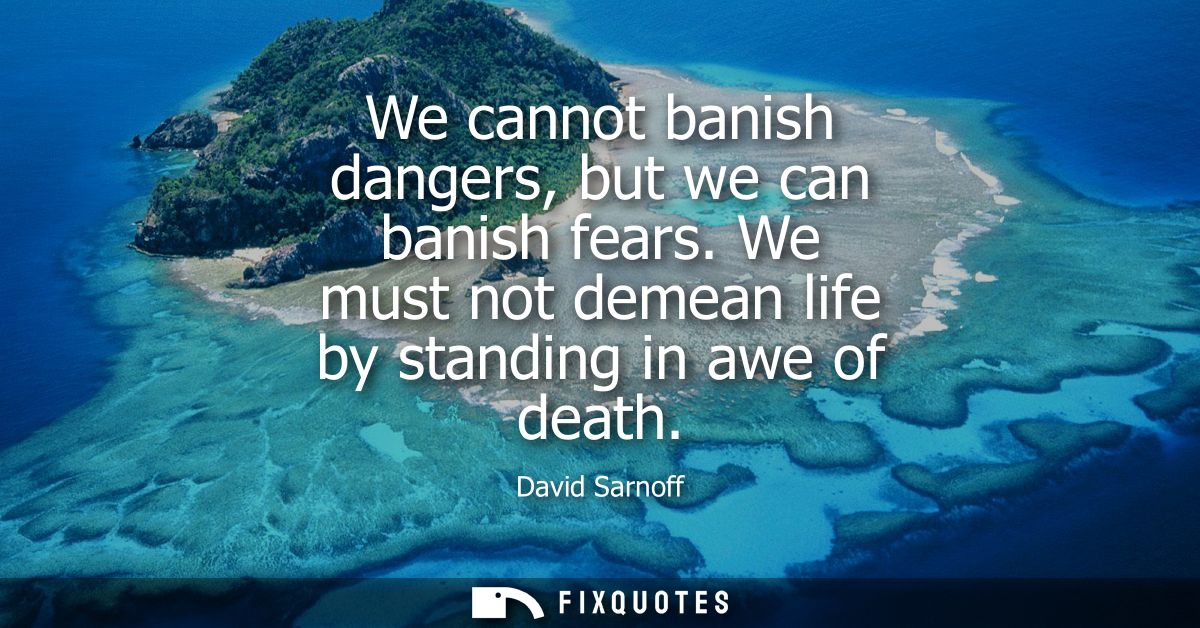"We cannot banish dangers, but we can banish fears. We must not demean life by standing in awe of death"
About this Quote
David Sarnoff’s words offer a profound reflection on the relationship between danger, fear, life, and death. His assertion that dangers can never be fully eliminated acknowledges the inherent uncertainties and risks that are woven into the fabric of human existence. No matter how much progress is achieved in society, technology, or personal development, there will always remain an element of unpredictability and potential peril in the world.
Yet, Sarnoff draws a critical distinction: while danger is unavoidable, fear is, to some extent, within human control. Fear, unlike danger itself, is rooted in our mental and emotional responses. By mastering our fears – refusing to be paralyzed or overwhelmed by anxiety over possible threats – individuals can reclaim agency. This triumph over fear does not mean being reckless or disregarding caution, but rather cultivating courage and resilience in the face of uncertainty.
Sarnoff further cautions against allowing an obsession with death to overshadow the quality and potential of living. To “demean life by standing in awe of death” is to let the inevitable end of existence diminish the vibrancy of the present. Death, being the ultimate certainty, deserves sober consideration but not reverence to the point that it hampers the experience of living fully. Constantly living under the shadow of mortality, one may forget to appreciate the beauty, meaning, and opportunities of the moments that compose life.
Instead, Sarnoff’s perspective advocates for embracing life with openness rather than letting fear of death cast a perpetual pallor over our days. By banishing unnecessary fears and accepting the ever-present nature of danger, people can focus on living deeply, purposefully, and authentically. It is an appeal to courage: to honor the gift of life not by shrinking away from risk, but by fully engaging in the pursuit of meaning despite life’s uncertainties.
More details
About the Author

